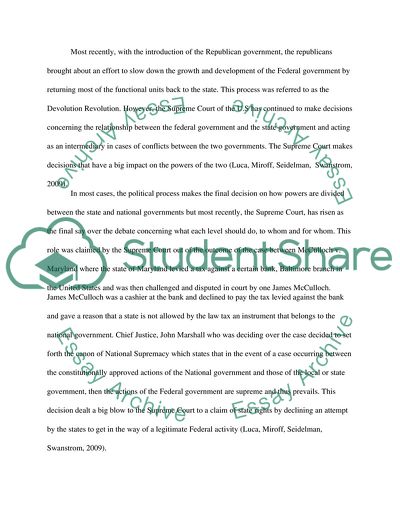Cite this document
(“State Laws versus National supremacy Essay Example | Topics and Well Written Essays - 1500 words”, n.d.)
State Laws versus National supremacy Essay Example | Topics and Well Written Essays - 1500 words. Retrieved from https://studentshare.org/social-science/1666245-an-interesting-aspect-of-american-politics-concerns-the-ways-in-which-political-conflicts-have-been-transformed-into-constitutional-struggles-over-federalism
State Laws versus National supremacy Essay Example | Topics and Well Written Essays - 1500 words. Retrieved from https://studentshare.org/social-science/1666245-an-interesting-aspect-of-american-politics-concerns-the-ways-in-which-political-conflicts-have-been-transformed-into-constitutional-struggles-over-federalism
(State Laws Versus National Supremacy Essay Example | Topics and Well Written Essays - 1500 Words)
State Laws Versus National Supremacy Essay Example | Topics and Well Written Essays - 1500 Words. https://studentshare.org/social-science/1666245-an-interesting-aspect-of-american-politics-concerns-the-ways-in-which-political-conflicts-have-been-transformed-into-constitutional-struggles-over-federalism.
State Laws Versus National Supremacy Essay Example | Topics and Well Written Essays - 1500 Words. https://studentshare.org/social-science/1666245-an-interesting-aspect-of-american-politics-concerns-the-ways-in-which-political-conflicts-have-been-transformed-into-constitutional-struggles-over-federalism.
“State Laws Versus National Supremacy Essay Example | Topics and Well Written Essays - 1500 Words”, n.d. https://studentshare.org/social-science/1666245-an-interesting-aspect-of-american-politics-concerns-the-ways-in-which-political-conflicts-have-been-transformed-into-constitutional-struggles-over-federalism.


